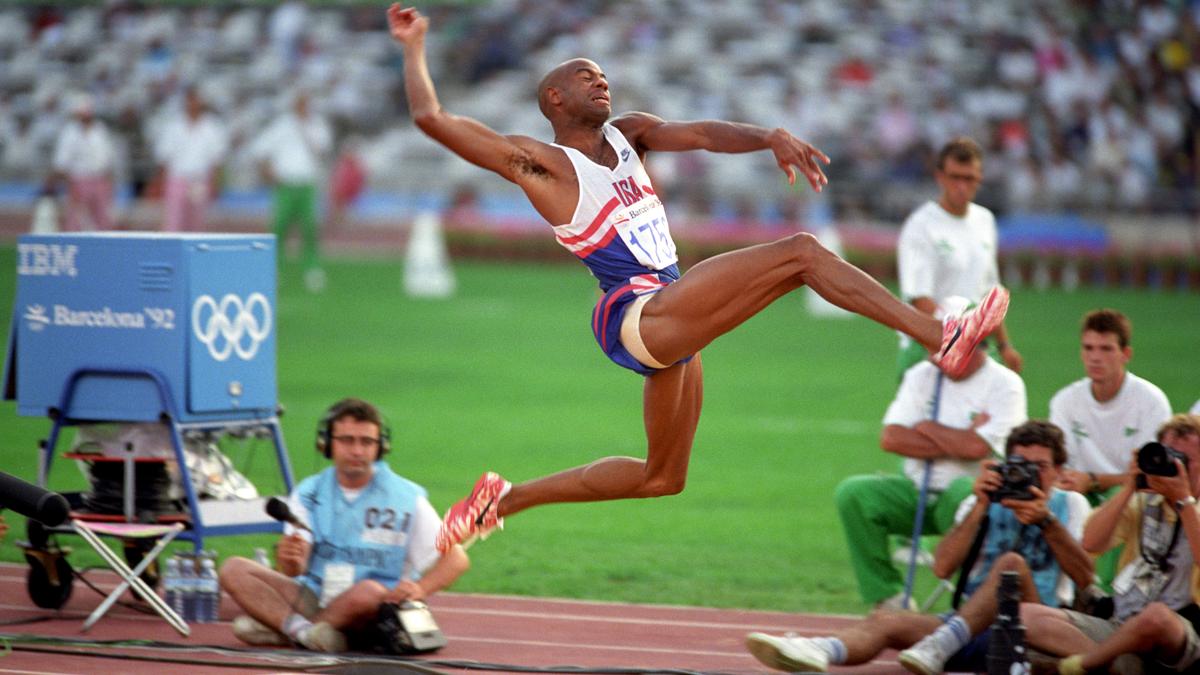Still a giant leap for man: the stagnation of the long jump Premium


Still a giant leap for man: the stagnation of the long jump Premium
In April 2022, the legendary Carl Lewis put out a blunt statement on social media platform X (then Twitter) that long jump was the hardest event in track and field. “There have been 5 male world record holders [sic: breakers] in the long jump since 1936,” Lewis said. “The present outdoor record is 31 years old… Seems pretty tough to me. What other event is that difficult to master?”
In quick time, Lewis was roundly criticised and even called an attention seeker, pretty much in line with X’s image of being a toxic crucible of abuse and simplistic narratives. It didn’t matter that Lewis was a nine-time Olympic gold medallist, with four of those in the long jump in a streak that started at Los Angeles 1984 and ended at Atlanta 1996.
Lewis’ rationale was that Mike Powell’s world record of 8.95m at the Tokyo World Championships in 1991 was — and is still — standing. The same with Bob Beamon’s Olympic record of 8.90m set at Mexico City 1968. Starting 1970, the men’s high jump, triple jump and pole vault — the other three jump events — have seen 12, 5 and 14 athletes better the best mark. Long jump has seen a grand total of one. Of the six record-holders from 1935, Powell, Beamon and Jesse Owens have each held it for 23 years or more.
In fairness, the longevity of a world record shouldn’t always determine the difficulty level of an event. If that is the case, the women’s track races should be the hardest of all, for the 100m, 200m, 400m and 800m records have remained intact since the 1980s. But Lewis’ thinking had more than a kernel of truth — that long jump was among the toughest to master, if not the toughest, and the lack of progression in world record distances was one of its prime fallouts.
“Long jump is a combination of speed, elastic strength and technique,” James Hillier, the athletics director at Reliance Foundation, told The Hindu. “If you look at the runway data from the Olympic Games, the winner has had the fastest times. The issue is how you transfer horizontal speed, which might be 10 m/s or higher for top long jumpers, into a vertical lift off the board.
“You have to hit that sweet spot. You have to be able to run fast enough because the speed is what carries you forward. But you should also be running within yourself so that you can coordinate and time a take-off. If you are driving a car at 30 miles an hour, and someone tugs the steering wheel, the car will just go off a little bit but you can correct it. If you are going at 100 miles an hour, a slight tug can result in a very bad accident. It is the same in long jumping.”
Between the 40m runway and the jump lies the 20cm take-off board where pin-point accuracy is non-negotiable. Jump from a few centimetres behind and you will end up losing that much distance. Leap from too close, the margin of error for a foul shrinks.
Lewis’ greatness lay in the fact that he had mastered this difficult balancing act. At Los Angeles in 1984, the American won the 100m, 200m, 4x100m relay races and the long jump. Four years later in Seoul, he again completed the 100m-long jump double.
Though he never held the long jump world record, the distances Lewis leapt were top draw — 8.54m in 1984, 8.72m in 1988 and 8.67m in 1992. In contrast, Brit Greg Rutherford took gold at London 2012 with 8.31m; American Jeff Henderson at Rio 2016 with 8.38m, and Greek Miltiadis Tentoglou at Tokyo 2020 and Paris 2024 with 8.41m and 8.48m respectively. And today, the number of elite athletes competing in both sprints and long jump is near-zero.
According to Powell, the long jump’s stagnating distances were a sure sign that the already tough discipline was regressing. In a media interaction in Bengaluru back in May 2016, Powell had said: “In the 2012 Olympics, 8.12 was the bronze. If Jesse Owens’ mark of 8.13 [world record set in 1935] can win a medal in 2012, that’s unheard of. Every other event has progressed.”
A factor that could be responsible is the lack of rivalries. At the 1991 Worlds, when Powell set the present best mark (8.95m), Lewis had three of his career-best jumps — 8.83m, 8.84m and 8.87m — and one wind-assisted mark of 8.91m which was better than Beamon’s then world record (8.90m). Lewis had in fact come into Tokyo unbeaten in 65 consecutive long jump events, “determined to break the world record that night”.
“I was on a mission,” Powell recollected. “Carl had just broken the world record in the 100m. And the key to jumping long is running fast. I had to break the record to beat him! On top of that, I hated Carl. He was my idol at first but after I started competing, I thought I had to demonise him. He was the guy in the sport. But I looked at him like another to beat.”
However, if World Athletics, as announced this February, goes ahead and trials a “take-off zone” instead of a board and starts measuring distances from the point athletes become airborne, it would mean the end of the long jump as we have known it, for it removes the incentive to master the perfect take-off. It could also potentially produce bigger jumps.
“I guess it supports what I have been saying, that long jump is the most difficult,” Lewis seethed on X. “This would just eliminate the most difficult skill from the event. Just make the basket larger for free throws because too many people miss them.”
Hillier, though, is on the fence, for now, and even felt it could be a good move if it brings the sprinters, like Lewis in his heyday, back. “It is set up to make the event a bit more exciting, but has not been communicated well,” the Welshman said. “But world records might have to be reset, like in javelin for example where they adjusted the weight after Uwe Hohn threw it 105m [104.80m]. That record has been taken off the books.
“For me, it is about storytelling and on the track, it is easy to see a story unfold. You will see someone in the lead at the start, then someone else takes over and then someone will come through at the end. That is the story unfolding for you. In field events that story needs to be told better and something that has been missed by television. I would say it can be more exciting because it goes on longer and can hold your attention.
“Marcell Jacobs, who won the 100m at Tokyo 2020, was a sprinter-long jumper and then gave up long jump to sprint. So it has become a bit less cool. If it [the change] gets the best athletes, the best sprinters, to be long jumpers, that would be good.”










